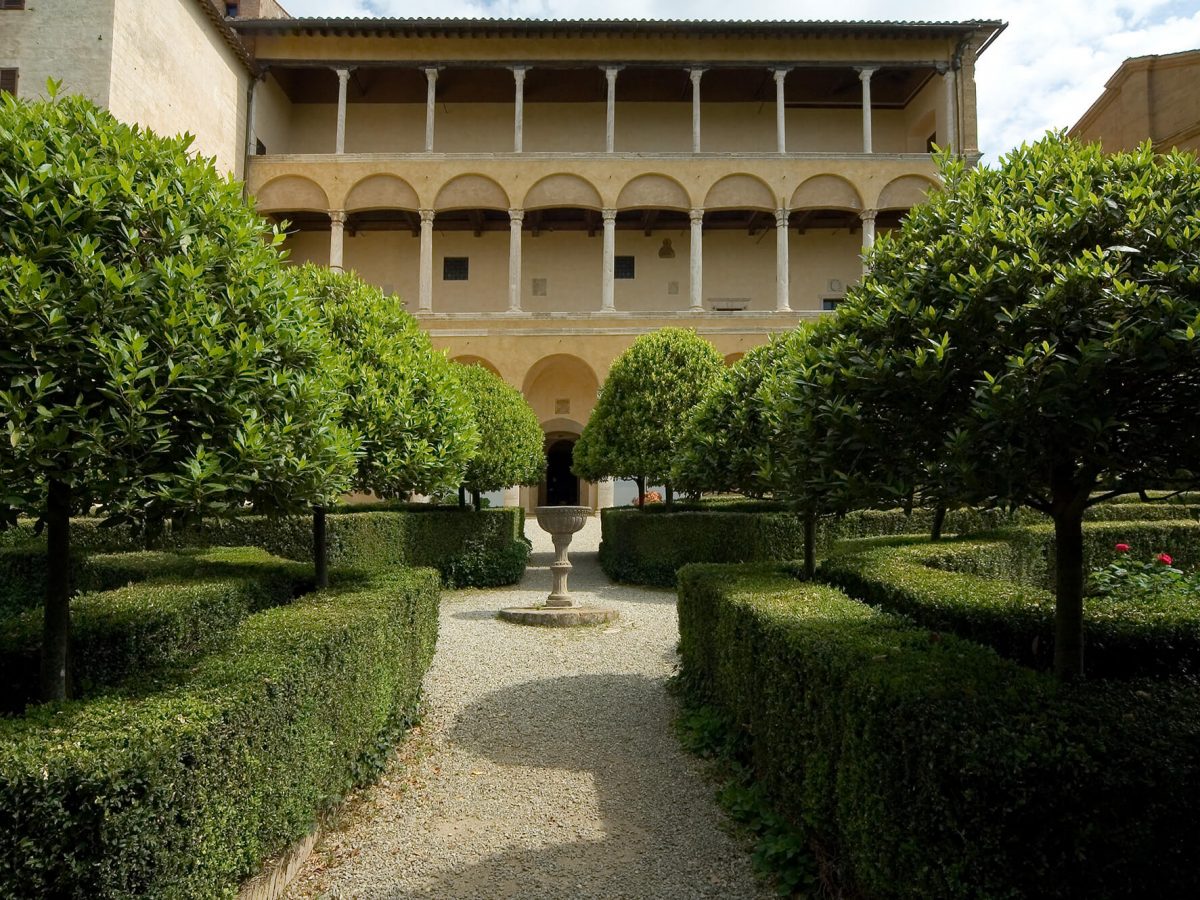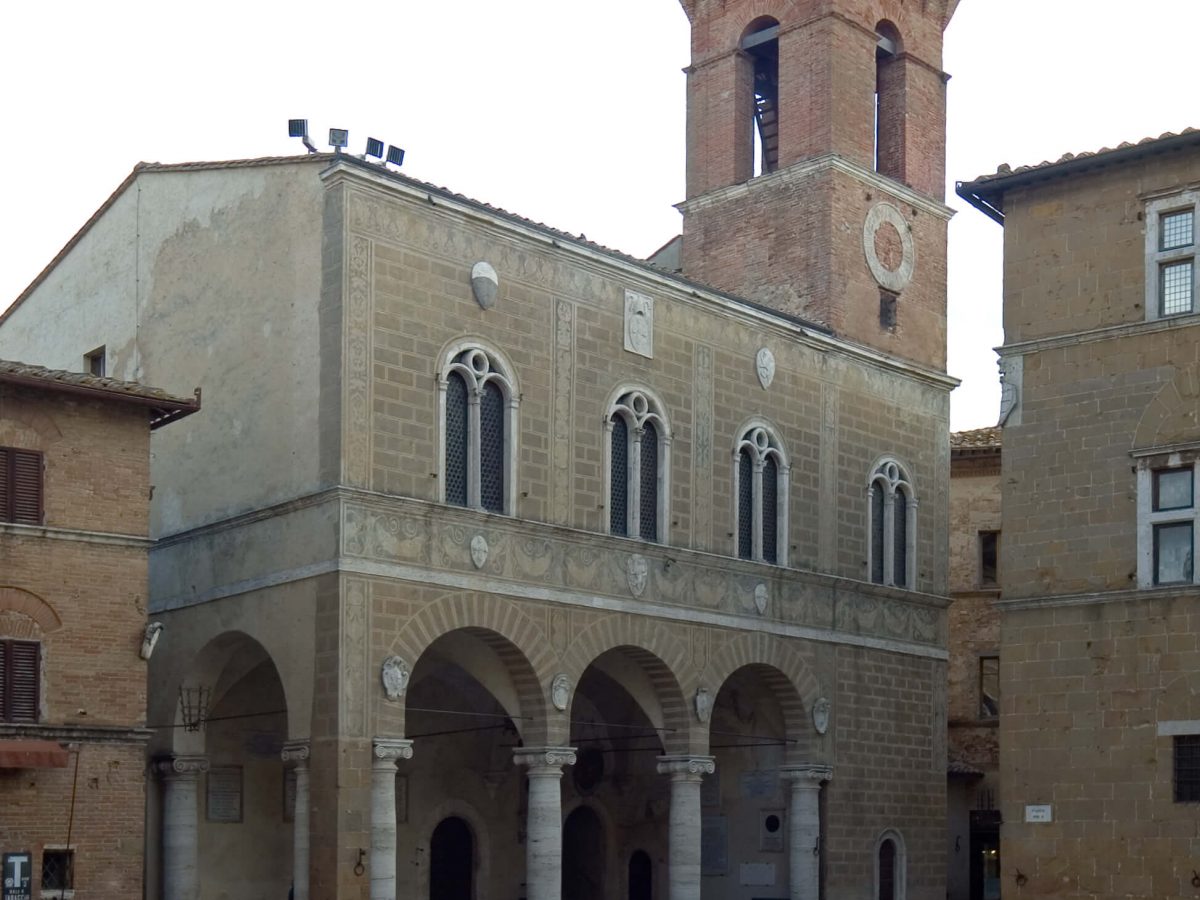Pienza, located on the crest of a hill overlooking the Val d’Orcia, 53 km south-east of Siena, was established in the medieval period as Corsignano. The town was renamed and redesigned in the late 15th century by Pope Pius II. Born in this Tuscan town, Enea Silvio Piccolomini became a leading humanist before being elected as Pope in 1458.
Renaissance town-planning concepts were first put into practice when Pope Pius II enlisted the architect Bernardo Rossellino to transform his birthplace. Rossellino applied the principles of his mentor, Leon Battista Alberti, a humanist thinker and architect, author of the first architectural treatise of the Renaissance. The Pope was further influenced by German philosopher Cardinal Nicolà Cusano and the German Gothic tradition. This is evidenced in the interior of the Pienza Cathedral, typical of the late Gothic style of southern German churches while the exterior is pure Renaissance. The bell tower blends Gothic and Renaissance forms.
The new vision of urban space was realized in the superb trapezoidal square known as Piazza Pio II. The construction of new major buildings around the square began in 1459 and included the cathedral as well as Piccolomini Palace, the Borgia Palace (or Episcopal Palace), the Presbytery, the Town Hall, and the Ammannati Palace. While the medieval urban plan was largely respected, a new main axis road, Corso Rosselino, was built to connect the two main gates in the medieval wall, which was also reconstructed during this period. Pius II’s plan, to develop the town as his summer court, involved the construction or reconstruction of approximately 40 buildings, public and private, which further transformed the medieval town into a creation of the Italian Renaissance. These included new buildings for the cardinals in the papal retinue as well as 12 new houses constructed for the general populous near the walls and Porta al Giglio.
As the first application of the Renaissance Humanist concept of urban design, the town occupies a seminal position in the development of the concept of the planned “ideal town” and plays a significant role in subsequent urban development in Italy and beyond.
The boundary of the site, defined by its original wall, includes all the essential elements that contribute to the justification of its Outstanding Universal Value. The ensemble created by Pius II has maintained its structural and visual integrity remaining essentially intact in all its components.


